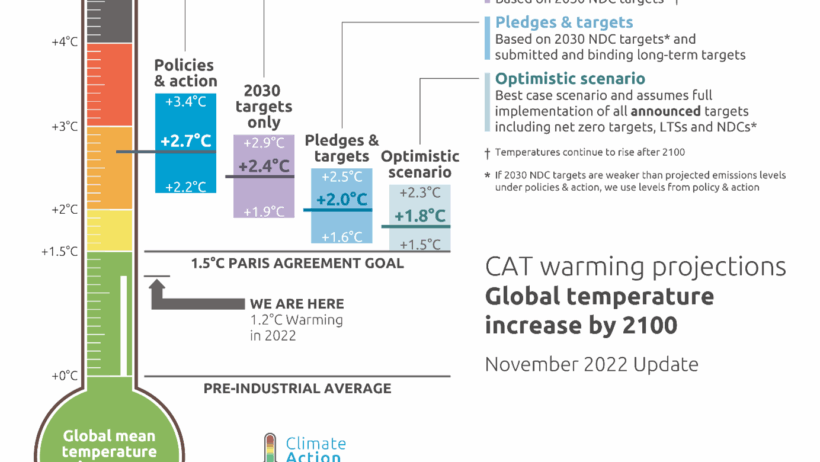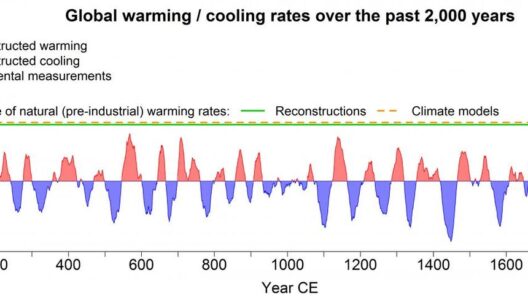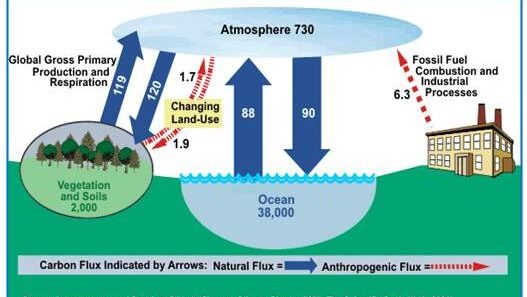The pervasive issue of climate change looms large over our planet, frequently igniting fierce debate and vigorous discussion. As human beings, our impact on the Earth’s climate cannot be denied; hence, the concept of the “Human Handprint” arises, serving as a dualistic metaphor. Can we simultaneously acknowledge our destructive capabilities while highlighting our potential for positive transformation? This intriguing question beckons a deeper exploration into the undeniable influence mankind has on global warming.
The Human Handprint encapsulates the tangible footprint we leave through our actions and choices. Historically, the Industrial Revolution marked the genesis of our significant relationship with fossil fuels—coal, oil, and natural gas—that has led to unprecedented carbon emissions into the atmosphere. Scientific evidence elucidates that these emissions contribute to global warming and climate change, observable through rising temperatures, evolving weather patterns, and melting glaciers. Each choice we make—what we consume, where we travel, and which technologies we utilize—contributes to this cumulative global effect.
Consider, for instance, the complexities surrounding energy consumption. The extraction, refinement, and combustion of fossil fuels form the backbone of our modern economy, but each process emits considerable greenhouse gases. We find ourselves at a crossroads: Will humanity continue to indulge in the habitual reliance on fossil energy? Or will we pivot toward a sustainable energy landscape? This poses a challenge that geologists, climatologists, and policymakers grapple with continuously.
As the chorus of climate advocates intensifies, one cannot overlook the growing movement towards renewable energy solutions. Solar, wind, and hydropower represent robust alternatives—energy sources that promise minimal impact on Earth’s ecological balance. Yet transitioning our energy grid requires an overhaul of infrastructure and public policies, demanding both collaboration and innovation. We must ponder: How can we catalyze this transition more effectively? The answer lies in embracing technology that not only safeguards our environment but simultaneously fuels economic growth.
The intersection of technology and sustainability has given rise to numerous innovations—from electric vehicles to energy-efficient appliances—each promising a reduced handprint of carbon emissions. The challenge for society is to adopt these advancements on a mass scale. Will consumers actively seek to integrate these environmentally friendly solutions into their daily lives? Local communities could play a pivotal role in accelerating this adoption, championing sustainable practices that resonate at the individual level.
But the challenge doesn’t stop there. Urbanization presents another formidable dilemma. Rapid population growth in cities exacerbates resource consumption, compelling urban planners to find sustainable solutions that can mitigate environmental degradation. Concepts such as green architecture and sustainable urban design serve as potent antidotes against the sprawling urban footprint, promoting energy efficiency and biodiversity in metropolitan environments. However, not all cities are designed with sustainability in mind; many continue to be plagued by inadequate infrastructure and pollution. How can we address the systemic issues within urban communities while ensuring equitable access to sustainable resources?
Moreover, the agricultural sector presents a complex tableau when examining the Human Handprint. Industrial farming techniques often rely on monocultures and synthetic fertilizers that severely compromise soil health and contribute to methane emissions. The urgent question here becomes: Can regenerative agriculture, which fosters biodiversity, enhance soil fertility, and sequester carbon dioxide, become the normative practice in farming? The answer lies in rekindling our relationship with the earth, practicing stewardship and responsible management of natural resources.
Beyond immediate collective actions, global cooperation is essential in combatting climate change. The challenge of climate governance necessitates multinational agreements, such as the Paris Agreement, which aims to hold global temperature rise below 2 degrees Celsius. Nations must strive toward ambitious targets and provide transparent accountability to ensure progress is made. However, disparity in capabilities and commitments creates friction. Will wealthier nations honor their pledges to support developing countries in their quest for sustainable development? Such cooperation may prove essential in fostering a collective human handprint that is increasingly light on the planet.
Individuals also play a critical role as change agents. The transformation in consumer behavior toward reducing waste, recycling, and conscious purchasing habits can substantially lower the human handprint. Educational initiatives that raise awareness about climate issues can empower people to make informed decisions. It poses an essential question: Are we ready to adopt new norms that reflect a sustainable future, or will we cling to outdated habits detrimental to our planet?
Finally, the narrative surrounding climate change must evolve to invoke a sense of hope and possibility. While it is easy to succumb to despair when faced with climate data, engaging in dialogue about solutions can inspire action. The challenge lies in reframing perceptions—highlighting not just what we stand to lose, but what we can gain through resilience and innovation. By cultivating a culture of environmental mindfulness, we can reshape the human handprint into a force for restoration rather than destruction.
In conclusion, our role in global warming is profound and undeniable. Through a careful re-examination of our behaviors, energies, and technologies, we can carve a path towards sustainability—transforming the human handprint from an emblem of pollution into a symbol of stewardship. This urgent quest demands collective responsibility, collaborative innovation, and unwavering resolve. Igniting this change may be our greatest challenge, but it also possesses the potential for monumental impact on our planet’s future.








